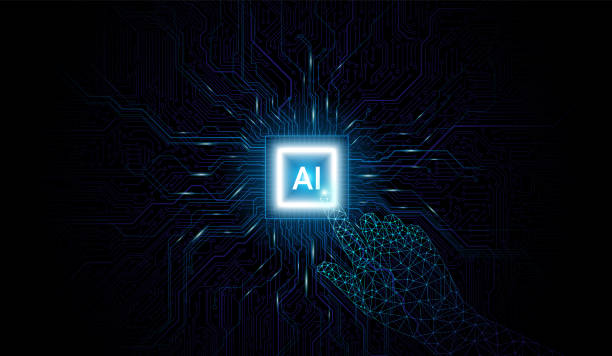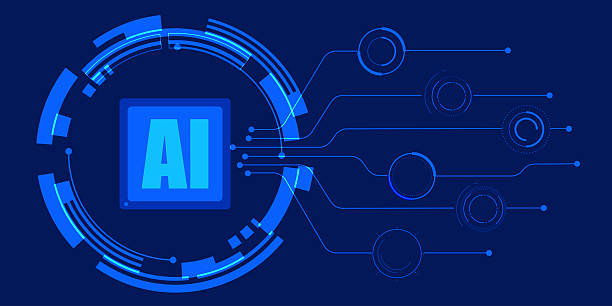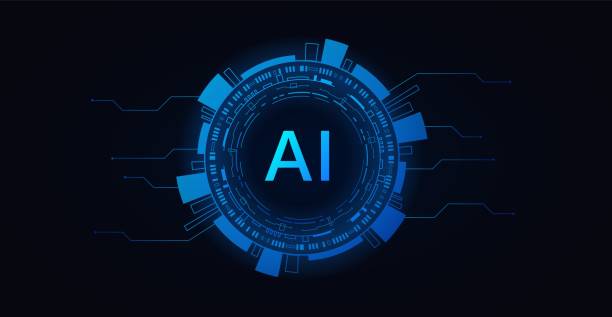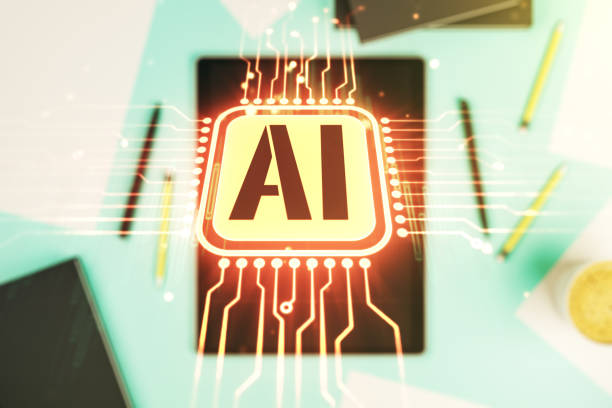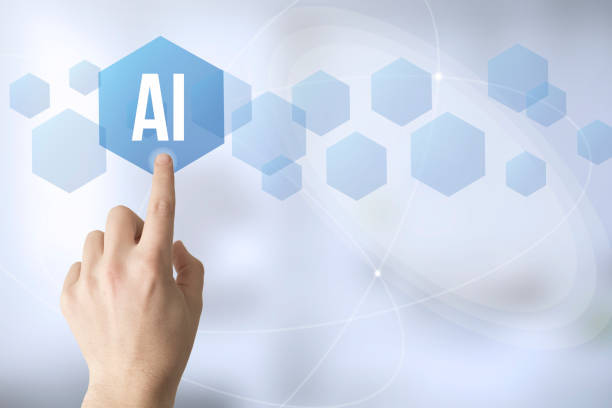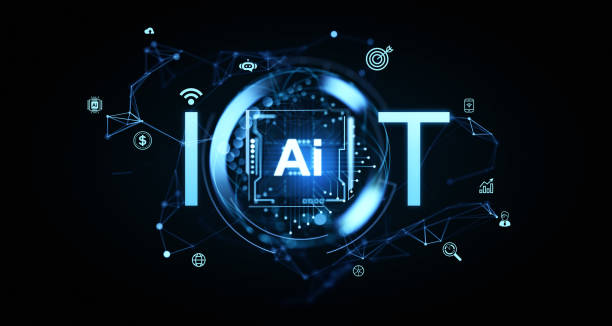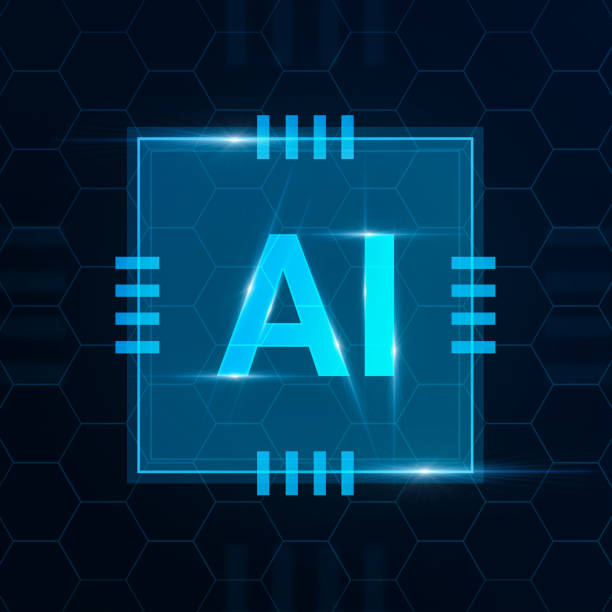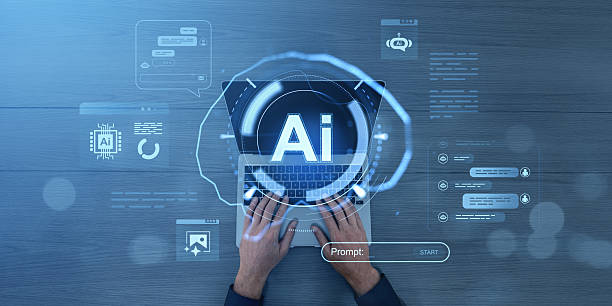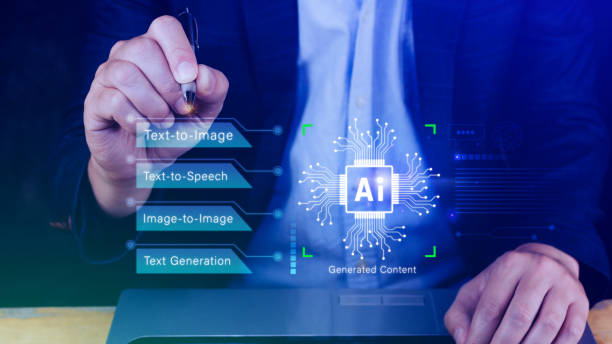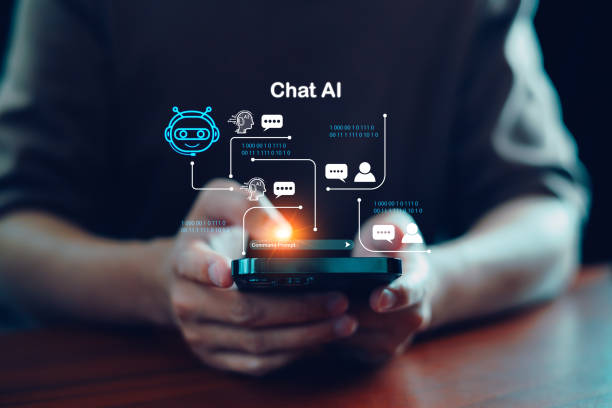What is Artificial Intelligence? Definitions and Basic Concepts
#Artificial_Intelligence (#AI) is a branch of computer science that seeks to create machines capable of performing tasks that typically require human intelligence.
These tasks include learning, reasoning, problem-solving, perception, and natural language processing.
In other words, the goal of AI is to build systems that can think, learn, and act as if they were human. Artificial intelligence is rapidly advancing and is currently used in many aspects of our lives.
These applications include:
- Self-driving cars
- Facial recognition
- Language translation
- Medicine
- Finance
The term Artificial Intelligence is often used to describe machines that have the ability to mimic cognitive processes associated with humans, such as learning, problem-solving, and decision-making.
However, there is currently no single, precise definition of artificial intelligence, and perceptions of it vary depending on different people’s perspectives.
This field includes a variety of approaches and techniques, from machine learning and neural networks to expert systems and robotics.
The ultimate goal is to build machines that not only perform specific tasks but can also learn in different situations and adapt to their environment.
Artificial intelligence has had a profound impact on various industries and is changing the way we interact with technology and the world around us.
Does your current website reflect your brand’s credibility as it should? Or is it driving away potential customers?
Rasaweb, with years of experience in designing professional corporate websites, is your comprehensive solution.
✅ A modern, beautiful website tailored to your brand identity
✅ Significantly increased lead generation and new customers
⚡ Contact Rasaweb now for a free consultation on corporate website design!
Types of Artificial Intelligence: Approaches and Classifications
Artificial intelligence can be categorized based on various criteria.
One of the most common classifications is based on the capabilities of artificial intelligence, which includes Narrow AI, General AI, and Super AI.
Narrow AI, which is currently the most widely used, is designed to perform specific tasks and performs well in that task.
General AI is capable of performing any task that a human can perform.
Super AI surpasses human intelligence and can solve more complex problems.
Click here to preview your posts with PRO themes ››
Another classification is based on the approaches used in the development of artificial intelligence.
Some common approaches include machine learning, neural networks, expert systems, and robotics.
Machine learning allows machines to learn from data without being explicitly programmed.
Neural networks are inspired by the structure of the human brain and are used for pattern recognition and prediction.
Expert systems use specialized knowledge to solve complex problems.
Robotics deals with the design and construction of robots that can perform physical tasks.
Understanding these categories and approaches is essential for a better understanding of artificial intelligence and its various applications.
Each type of artificial intelligence and each approach has its own advantages and disadvantages and is more suitable for specific applications.
Applications of Artificial Intelligence in Various Industries
Artificial intelligence is increasingly used in various industries and has a significant impact on their performance and efficiency.
In healthcare, artificial intelligence is used for disease diagnosis, drug development, and personalized medical care.
In the financial industry, artificial intelligence is used to detect fraud, manage risk, and provide improved customer service.
In the manufacturing sector, artificial intelligence is used to optimize processes, reduce costs, and increase productivity.
In the field of transportation, self-driving cars are a prominent example of the application of artificial intelligence, which can increase road safety and improve traffic.
In the retail sector, artificial intelligence is used to provide personalized recommendations to customers, manage inventory, and improve the shopping experience.
These are just a few examples of the widespread applications of artificial intelligence in various industries, and with the advancement of technology, it is expected that more applications will be developed.
In summary, artificial intelligence has the potential to create fundamental transformations in various industries and can lead to improved efficiency, reduced costs, and better services.
For example, in the agricultural sector, artificial intelligence can be used to monitor crops, optimize irrigation, and reduce the use of pesticides.
| Industry | Artificial Intelligence Application |
|---|---|
| Healthcare | Disease diagnosis, drug development |
| Finance | Fraud detection, risk management |
| Manufacturing | Process optimization, increased productivity |
Machine Learning and its Role in Artificial Intelligence
Machine learning is one of the most important subfields of artificial intelligence that allows machines to learn from data and improve their performance without being explicitly programmed.
Machine learning includes various algorithms that can recognize patterns in data, make predictions, and make decisions.
These algorithms can be divided into two general categories: Supervised Learning and Unsupervised Learning.
In supervised learning, the machine is trained using labeled data, i.e., data that has a defined input and output.
These algorithms can learn how to map inputs to correct outputs.
In unsupervised learning, the machine is trained using unlabeled data and must discover hidden patterns and structures in the data.
These algorithms can be used for clustering data, reducing dimensions, and discovering association rules.
Machine learning plays a vital role in many applications of artificial intelligence.
These applications include facial recognition, voice recognition, language translation, and product recommendation.
With the advancement of technology and the increase in data volume, machine learning has become a more powerful tool that can help solve more complex problems and create smarter systems.
Artificial Intelligence is able to identify complex patterns in data and make decisions based on them with the help of machine learning.
Are you annoyed by losing customers who visit your site to make a purchase?
Rasaweb is your specialized solution for having a successful online store.
✅ Significant increase in your online sales
✅ Creating trust and professional branding with customers⚡ Get free consultation from Rasaweb experts!
Neural Networks and Deep Learning
Neural networks are computational models inspired by the structure of the human brain.
These networks are made up of a large number of processing units (neurons) that are connected to each other in layers.
Each neuron receives inputs, processes them, and produces an output.
The output of one neuron can be the input of other neurons.
Neural networks can be used to learn complex patterns and relationships in data.
Deep learning is a subset of machine learning that uses deep neural networks (networks with many layers) for learning.
Deep neural networks can learn more complex features in data and perform better in various tasks.
Deep learning has made significant progress in recent years and has achieved very good results in many applications of artificial intelligence, including image recognition, voice recognition, and language translation.
One of the main advantages of deep neural networks is that they can automatically extract important features from data without the need for engineers to manually design the features.
This makes deep neural networks very suitable for solving complex problems and learning from large volumes of data.
Artificial intelligence, by utilizing neural networks and deep learning, is capable of performing tasks that were previously thought to be only possible by humans.
Challenges and Limitations of Artificial Intelligence
Artificial intelligence, despite its remarkable advances, still faces challenges and limitations.
One of these challenges is the need for large and high-quality data to train artificial intelligence models.
Machine learning models need a large volume of data to learn patterns and relationships in the data.
If the data is of low quality or biased, artificial intelligence models cannot function properly.
Another challenge is the interpretability of artificial intelligence models.
Many deep learning models are known as “black boxes,” meaning that it is difficult to understand how a model has reached a particular result.
This can reduce trust in artificial intelligence models and limit their use in sensitive applications such as medicine and law.
Also, there are ethical issues associated with artificial intelligence.
For example, the use of artificial intelligence in decision-making systems can lead to discrimination and inequality.
There are also concerns about job losses due to automation.
To address these challenges, more research is needed in the field of artificial intelligence, and regulations and standards need to be developed for the responsible use of artificial intelligence.
Understanding these challenges and limitations is essential for the effective development and use of artificial intelligence.
Artificial intelligence, as a powerful technology, requires responsible and thoughtful approaches in order to be used for the benefit of society.
The Future of Artificial Intelligence: Predictions and Trends
The future of artificial intelligence is very bright and full of potential.
Artificial intelligence is expected to make significant progress in the coming years and find more applications in various industries.
Some of the important trends in artificial intelligence include:
- Increased use of artificial intelligence at the edge (Edge AI): Processing data on edge devices (such as smartphones and cars) instead of sending data to the cloud.
- Development of Explainable AI: Creating artificial intelligence models that can explain how they reach results.
- Integration of artificial intelligence with other technologies: such as the Internet of Things (IoT), blockchain, and augmented reality (AR).
- Greater focus on the ethical and social issues of artificial intelligence: such as protecting privacy, preventing discrimination, and ensuring security.
It is predicted that artificial intelligence will have a profound impact on our lives and change the way we work, interact, and live.
For example, artificial intelligence can help improve healthcare, increase productivity, and solve complex problems.
However, in order to be able to fully benefit from the benefits of artificial intelligence, we need to address its challenges and limitations and use it responsibly.
Artificial intelligence, as a transformative force, requires strategic and comprehensive approaches to contribute to sustainable development and social welfare.
| Trend | Description |
|---|---|
| AI at the Edge | Processing data on edge devices |
| Explainable AI | Explainable artificial intelligence models |
| Integration with other technologies | Integration with IoT, Blockchain, AR |
The Impact of Artificial Intelligence on the Labor Market and Jobs
Artificial intelligence has a significant impact on the labor market and jobs.
On the one hand, artificial intelligence can automate some tasks and jobs, which may lead to the loss of some jobs.
On the other hand, artificial intelligence can create new job opportunities, especially in areas related to the development, deployment, and maintenance of artificial intelligence systems.
Also, artificial intelligence can help improve productivity and efficiency in many jobs and increase income and economic growth.
In order to benefit from the benefits of artificial intelligence in the labor market and prevent its negative effects, it is necessary to plan and invest in training and developing new skills.
Workers must learn the skills necessary to work with artificial intelligence systems and perform tasks that cannot be automated.
Also, appropriate social and economic policies need to be developed to support workers who lose their jobs.
Artificial intelligence, as a transformative factor in the labor market, requires active and constructive approaches to create new job opportunities and improve working conditions.
In short, artificial intelligence can be both a threat and an opportunity for the labor market.
With proper planning and investment in education, we can benefit from its benefits and prevent its negative effects.
This includes retraining the workforce, creating new job opportunities in the IT sector, and developing AI-related skills.
AI needs a supportive ecosystem that both encourages innovation and protects the workforce from the changes caused by automation.
Are you tired of your company website not meeting your expectations? With Rasaweb, design a professional website that showcases the true face of your business.
✅ Increase new customer acquisition and sales leads
✅ Increase the credibility and trust of your brand with your audience
⚡ Get a free website design consultation!
Ethical and Legal Issues Related to Artificial Intelligence
Artificial intelligence raises important ethical and legal issues that need to be addressed.
One of these issues is protecting privacy.
Artificial intelligence systems are often used to collect and analyze personal data, which can lead to privacy violations.
For example, facial recognition systems can be used to track people without their knowledge.
To solve this problem, it is necessary to develop laws and regulations to limit the collection and use of personal data by artificial intelligence systems.
Another issue is accountability.
If an artificial intelligence system causes harm, who is responsible? Is it the system developer, the system user, or the artificial intelligence system itself? To solve this problem, it is necessary to develop legal frameworks for determining accountability for the actions of artificial intelligence systems.
Also, ethical standards need to be developed for the development and use of artificial intelligence systems.
These standards should address issues such as protecting privacy, preventing discrimination, and ensuring security.
Artificial intelligence (AI), with all its potential, needs strong ethical and legal frameworks to be used responsibly and in the public interest.
In short, ethical and legal issues related to artificial intelligence should be taken seriously, and appropriate laws, regulations, and ethical standards should be developed to address them.
This is necessary to ensure that artificial intelligence is used responsibly and in the interests of society.
It should be ensured that artificial intelligence helps reduce inequalities instead of increasing them and respects people’s fundamental rights and freedoms.
How to Learn Artificial Intelligence: Resources and Learning Paths
Learning artificial intelligence can be a challenging but very rewarding process.
There are many resources for learning artificial intelligence, including online courses, books, articles, and practical projects.
One of the best ways to start learning artificial intelligence is to take an online course.
Online courses are usually structured and present the material step-by-step.
Some of the famous online courses in the field of artificial intelligence are Coursera, edX, and Udacity courses.
In addition to online courses, books can also be a good source for learning artificial intelligence.
Some of the famous books in this field include “Artificial Intelligence A Modern Approach” by Stuart Russell and Peter Norvig, and “Deep Learning” by Ian Goodfellow, Yoshua Bengio, and Aaron Courville.
Also, scientific articles and blogs can be a good source for learning about the latest advances in artificial intelligence.
One of the best ways to learn artificial intelligence is to work on practical projects.
By working on projects, you can put your skills into practice and solve real problems.
Finally, to succeed in learning artificial intelligence, you need to be motivated and persistent.
Learning artificial intelligence takes time and effort, but with effort and persistence, you can achieve your goals.
AI is a dynamic and evolving field, so you should always be up-to-date and aware of the latest developments.
Joining online communities and attending conferences and workshops can also help you learn and network.
Frequently Asked Questions
| Question | Answer |
|---|---|
| What is the definition of هوش مصنوعی (Artificial Intelligence)? | It is a field in computer science that aims to create intelligent machines that can think, learn, solve problems, and make decisions like humans. |
| Mention some common applications of artificial intelligence. | Includes self-driving cars, voice assistants (such as Siri and Alexa), recommendation systems (such as Netflix and Amazon), facial recognition, and medical diagnosis. |
| What is the difference between Narrow AI (ANI) and General AI (AGI)? | Narrow AI is specialized in a single and specific task, while General AI possesses human intellectual ability to perform any cognitive task. |
| What is Machine Learning and how does it relate to artificial intelligence? | Machine learning is a branch of artificial intelligence that focuses on developing algorithms that allow systems to learn from data without explicit programming. |
| What are Artificial Neural Networks? | They are computational models inspired by the structure and function of the human brain, and are used in deep learning to process data and discover complex patterns. |
| Mention some ethical challenges related to artificial intelligence. | Includes issues of privacy, bias in data and algorithms, job losses, and liability in the event of errors or unfair decisions. |
| What is Natural Language Processing (NLP)? | It is a branch of artificial intelligence that focuses on enabling computers to understand, interpret, and generate human language in a useful and interactive way. |
| How can artificial intelligence affect the labor market? | It can lead to automation of some routine tasks, requiring retraining of workers and creating new jobs in the areas of design, development, and maintenance of artificial intelligence systems. |
| What is Computer Vision? | It is a field in artificial intelligence that enables computers to “see” and understand and interpret images and videos in the same way that humans do, enabling them to recognize objects and faces. |
| What is the importance of data in developing artificial intelligence systems? | Data is the fuel that powers artificial intelligence systems, especially in machine learning. The quality and quantity of data greatly affect the accuracy and performance of models and their ability to learn and make correct decisions. |
And other services of Rasa Web Advertising Agency in the field of advertising
Smart Conversion Rate Optimization: An exclusive service for growing user engagement based on Google Ads management.
Smart Digital Advertising: A combination of creativity and technology to analyze customer behavior through custom programming.
Smart Sales Automation: A fast and efficient solution for user interaction with a focus on attractive user interface design.
Smart Website Development: A fast and efficient solution for increasing website traffic with a focus on intelligent data analysis.
Smart Direct Marketing: An exclusive service for improving SEO ranking based on attractive user interface design.
And more than hundreds of other services in the field of internet advertising, advertising consulting and organizational solutions
Internet Advertising | Advertising Strategy | Advertorial
Resources
What is Artificial Intelligence?
,What is Artificial Intelligence (AI)?
,Artificial Intelligence: A Guide
,What is Artificial Intelligence (AI)?
? Ready to transform your business in the digital world? Rasaweb Digital Marketing Agency, by providing comprehensive and innovative solutions, is with you on the path to success. To experience sustainable growth, from **website design with a modern user interface** to SEO strategies and targeted advertising campaigns, contact us.
📍 Tehran, Mirdamad Street, next to the Central Bank, Kazerun Jonoubi Alley, Ramin Alley No. 6


